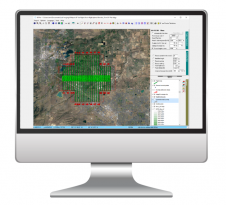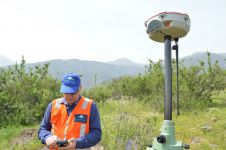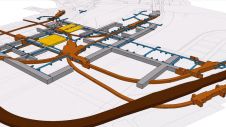EuroTitle: Land Registry Standard
Paving the Way to a Common Property Market
An increase in trans-border property transactions within the European Union poses a demand for easy access to information belonging to the national land administrations of Member States. A common European Land Market also requires a uniform system of land registration. The authors propose introduction of the EuroTitle, a standard for land registration complementary to existing national systems.
The European Union’s four freedoms: free movement of persons, capital, services and goods, seem to provide a proper basis for increased trans-border property transactions and opening up of the mortgage markets within Europe. However, current trans-border transactions are few, whilst trans-national mortgage lending constitutes no more than 1% of total European mortgage business. The absence of any vivid European land market may result from lack of transparency and certainty.
Barriers
How to become the owner of a house in another country and how to finance it by a loan secured by mortgage? These practical questions are difficult to answer. In general, the buyer and his local banker will be unaware of land law in the foreign country. Further, information on owner and others with interests in the property is difficult to judge on its merits; what, for example, does it mean that Monsieur Le Grand is registered in France as ‘propriétaire’ (owner) of a certain plot? Are there hidden claims? Mortgage banks have difficulties in assessing the value of the information they receive and so do not risk supporting a loan for property in another Member State. How to overcome these barriers?
The European Commission (EC) Green Paper on Financial Services Policy (2005-2010) states that mortgage credit is one area where further retail integration might be beneficial to encourage the emergence of some activity in this field. A recent report to the EC from the Forum Group on Mortgage Credit identified barriers to any smooth functioning Internal (European) Market for mortgage credit and made recommendations to the Commission to tackle this. A common European property market requires firstly transparency of mortgage products, secondly transparency of information coming from national land registries, and thirdly a uniform level of certainty concerning rights and interests in real property.
Transparency
一个解决方案来处理之间的差异mortgages within the European Union (EU) is offered by the Eurohypothec Research Group with its model for a common mortgage. This is not intended to replace the roughly 25 different types of legal frameworks for mortgages and ‘hypotechs’ in Europe. The Eurohypothec is an extra tool for lenders and borrowers. It should also make it possible to secure a loan (or loans) with one mortgage on several properties in different Member States. Currently this is not possible; several national mortgages must be granted in each country to secure different loans. In some countries mortgages can secure only one loan. This makes a European mortgage market almost non-existent.
The European Mortgage Federation, representing EU mortgage bankers, asks for improvement in the transparency and security of Europe’s land registers. Online access to national land and mortgage registers should be made possible on a trans-border basis in all member states. The European Union Land Information Service (EULIS) would seem to provide the answer. EULIS project partners aim to set up a live operational service to provide online and updated European trans-border information, thus giving access to such information on property rights for use in the databases of participating land registries. This is also the limitation; because the legal value of such information is not equal across all countries. For example, some Member States have registration of title, guaranteeing the absence of unregistered rights, while others have registration of deeds, which may be incomplete and without any guarantees.
Certainty
The Eurohypothec will provide a European instrument for securing loans, so addressing the first requirement: transparency of mortgage products. EULIS addresses the second requirement: transparency of information from national land registries. But neither can resolve problems arising from a diversity of national land registry systems. From the recommendations of the Forum Group on Mortgage Credit it is clear that the mortgage market highly values transparency and certainty in property rights. In short, a bank won’t lend money under an Eurohypothec without certainty regarding the legal status of the property or properties encumbered. Such certainty directly depends upon the efficacy of the Land Register in showing who is the owner of a piece of land and how it is charged. However, not every registration system works in the same way.
以登记的影响为标准,registration systems all over the world provide different levels of legal certainty. In general, a register (even within the Torrens system) can never totally guarantee actual legal status of a lot of land, as each register is based on presumptions that may be attacked in a court of law by the owner of a contradictory title. For example, because the contract of sale is void. Within Europe there is no unification of the causes that may affect the validity of a registered title. Harmonisation is difficult within the field of Land Register law, law of contracts and obligations and rights in land.
Recommendations
The Forum Group on Mortgage Credit recommended, among other things, that the European Commission should ensure the following.
- All charges affecting real estate must be registered in a Public Register in order to be binding upon and take effect against third parties, regardless of their nature.
- 创建、修改或char的灭绝ge on real property shall become effective vis-à-vis third parties only at the point of registration in the Public Register.
- Registered charges on real property in relation to the same estate shall rank in the order of priority disclosed in the Public Register.
- Public Registers make all relevant information available to all parties or their representatives.
- Member States provide that the responsible Public Register certifying authority should have state indem-nity. In the event that such responsibility is delegated to a third party, such party shall be covered by appropriate professional liability insurance for an adequate sum.
EuroTitle
The requirements of both transparency and certainty could be covered by introduction of the
EuroTitle. This would be title registration based on (newly developed) European standards. It would become a common method of land registration within Europe, an alternative but not a replacement for existent national land registrations. The system would not require the introduction of a European Land Registry. EU Member States would support registration of such a title in the national registry, and the national land registry would be able to issue an EuroTitle within its jurisdiction. The EuroTitle would be guaranteed by the registration organisation. An owner could choose to have his land registered as EuroTitle or to keep his national title. Land registered under EuroTitle would guarantee certainty of rights, but also provide easy access to underpinning information.
Such a title would provide the necessary uniform legal certainty for rights to land in all EU Member States, and the use of standard procedures all over Europe would provide a reliable basis for e-conveyancing. How a future Europe would look with two types of registration in place within one system can be found in Minnesota, where Torrens title (registration of title) and Abstract title (based on recording of deeds) are integrated within one GIS.
Concluding Remarks
The EuroTitle may bring the required uniformity of land registration within Europe. The legal and organisational effects need to be further examined for the feasibility of this concept to be properly assessed.
Further Reading
- Stefan Gustafsson, 2003, EULIS: European Land Information Service, GIM International Vol. 17, No. 8, pp 45-47.
- Esa Tiainen, 2004, The EULIS glossary-standardising Land and Property Information Technology, GIM international Vol. 18, No. 10, pp 34-37.
Make your inbox more interesting.Add some geo.
Keep abreast of news, developments and technological advancement in the geomatics industry.
Sign up for free
























